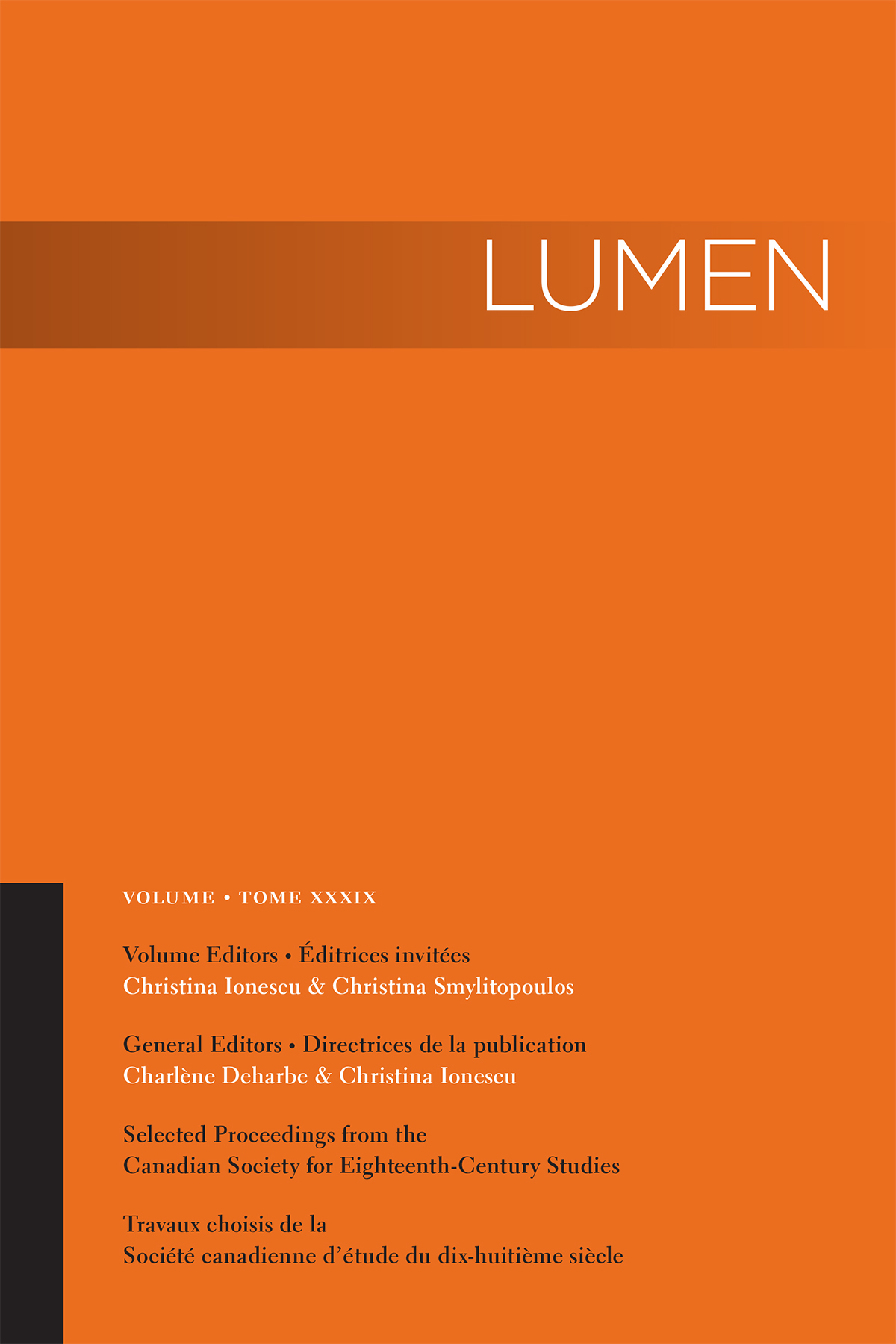Abstracts
Abstract
Gilbert Imlay’s 1793 epistolary novel The Emigrants, which dramatizes several characters’ journey across the Alleghenies to occupy and develop a tract in the Ohio country, features the use of allusions and commonplaces that illuminate this fiction’s provocative campaign to conciliate physiocracy, proto-feminism, and the new philosophy with the expulsion of indigenous people in the region. Imlay uses Pope, Sterne and Thomson to justify and eroticize U.S. expansiveness. The heroine Caroline T—n embodies, especially, the wondering, wonderful vindication of a world-historical land-grab. Comparisons with contemporary stories by Chateaubriand, Blake, Radcliffe, and the Seneca leader known as the Cornplanter highlight ways in which Imlay—partaking of a rhetorical repertoire demonstrably familiar to his peers—mutes history, religion, appropriation, and aggression in favour of erotic appeal, a series of emblematic, excusatory metonymies, and the picturesque language of an early phase of the North American real estate pitch.

